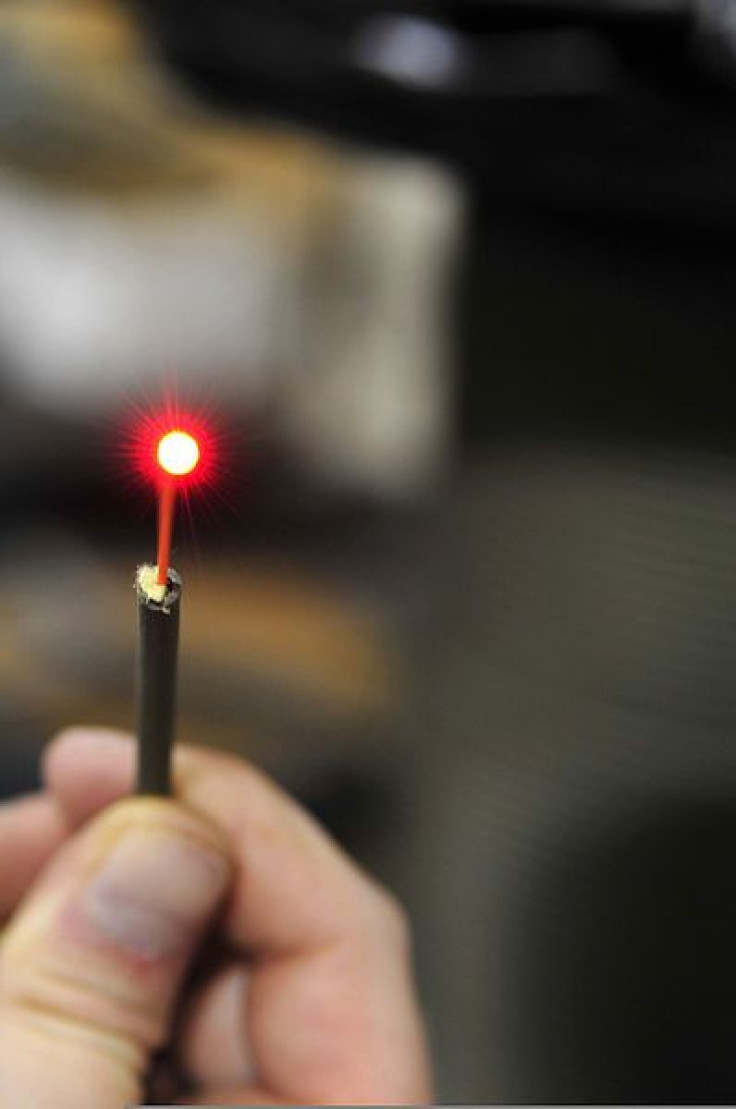Fiber Optic Pen Illuminates Neural Connections Involved In Dyslexia And Dysgraphia

In order to see what's happening inside the brain of a person with learning disabilities while they read and write in real time, researchers ingeniously created a computer-interfaced drawing pad that lead to a deeper understanding of learning disabilities, a new study says.
Thomas Lewis, director of the University of Washington's Instrument Development Laboratory, and a team of engineers put two optical fibers through a hollow ball point pen and attached it to a light-tight box. The pen's movements were recorded in another room. Then they used a wooden pad with paper containing various color gradients to study children ages 11-14 with dyslexia or dysgraphia, comparing how they read and write while their heads underwent functional magnetic resonance imaging (fMRI). Engineers intend to use this data to help them understand the neural connections involved in putting thoughts to paper.
The pen and pad connect to a computer that records the handwriting, including every time a participant lifted their pen; as well as the pen's strokes, speed, and hesitations. The participants held the device on their laps as they read directions on a screen, all while their heads were inside of the fMRI scanner. They were told to complete reading and writing tasks in four-minute blocks and afterward they were asked to think about writing an essay. They eventually wrote these essays later while their brains weren't being scanned.
"If you picture yourself writing a letter, there's part of the brain that lights up as if you're writing the letter," Todd Richards, professor of radiology and principal investigator of the UW Integrated Brain Imaging Center, said. "When you imagine yourself writing, it's almost as if you're actually writing, minus the motion problems."
Dyslexia is a learning disorder that makes it difficult to read. It is especially common in children, and can sometimes go unnoticed for years. However, it's mostly in school where a child might be found to be reading level below that of their age group, difficulty comprehending rapid instructions, problems remembering the sequence of things, as well as many other symptoms of dyslexia.
Dysgraphia is a learning disability that affects handwriting and letter-processing. It can lead to problems with spelling, poor handwriting, and putting thoughts onto paper. People with this disorder tend to have visual-spatial difficulties and language processing difficulties.
"There are certain centers and neural pathways that we didn't necessarily expect to be activated," Richards said. "There are language pathways that are very well known. Then there are other motor pathways that allow you to move your hands. But how it all connects to the hand and motion is still being understood."
The engineers will not only be studying these learning disabilities either, there are a number of diseases that cause motor problems, including stroke, multiple sclerosis, and Parkinson's disease.
"There are several diseases where you cannot move your hand in a smooth way or you're completely paralyzed," Richards said. "The beauty is it's all getting recorded with every stroke, and this device would help us to study these neurological diseases."
Source: Reitz F, Richards T, Wu K, et al. A Low-Cost, Computer-Interfaced Drawing Pad for fMRI Studies of Dysgraphia and Dyslexia. Sensors. 2013.



























